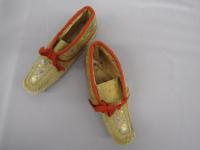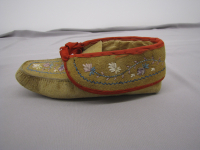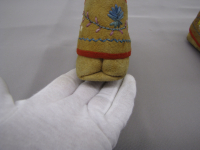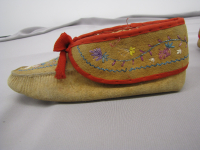moccasins
moccasins
moccasins
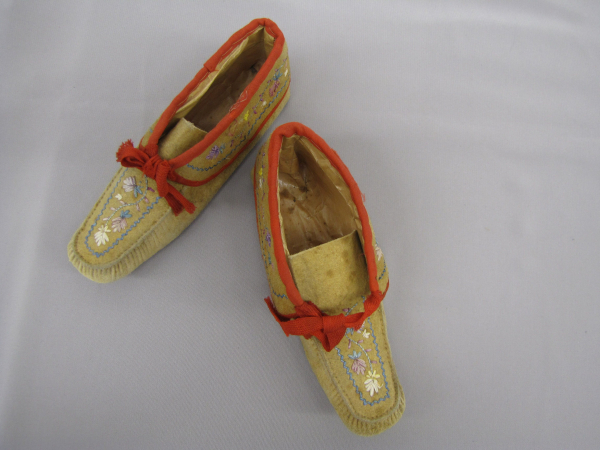
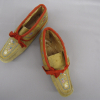
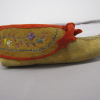
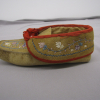
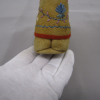

Pair of tanned, smoked moosehide moccasins with red cotton edges and floral design. Part of a collection donated by Raphael Bischoffsheim. Based on style and materials, they were most likely made by the Huron-Wendat community of Wendake (Lorette), in Quebec as part of their souvenir arts production and were meant to be worn as slippers as opposed to shoes. A nearly identical pair are located in the Museum Volkenkunde and are GKS #25591.
Stylistic.
MQB catalogue.
Read More About This Relative
Tanned, smoked moosehide; moosehair, blue, white, lavender, beige, bright yellow; lining: glazed cotton, faded pink; edging: cotton, red; commercial thread; bow: red cotton tape.
Basting-size stitches can be seen on the inside. Heel: T seam, no quill work around it. Cuff is one piece attached to the body of the moccasin. The vamp seam is clearly evident and raised, with small gathers along the seam.
It is worth noting that during this period, the community used commercially tanned hide due to a shortage as opposed to Native-tanned hide, as indicated in:
Pieter Hovens, with contributions by Duane Anderson, Ted Brasser, Laura van Broekhoven et al. "The Ten Kate Collection 1882-1888". Leiden: ZKF Publishers, 2010, pp 25.
Floral images common in moccasins from this community in this era.
Aniline dye was used to colour the moosehair, dating the moccasins to after 1857.
The moosehair is coloured using aniline dyes, which were invented in 1858.
Based on the information below from GKS#25591, a nearly identical pair of moccasins from the same Indigenous community in another museum, Autumn Epple believes that these moccasins date between 1870 and 1899:
"[This pair of moccasins] in the ten Kate collection are examples of the mass production of moccasins developed four the tourist market by Wendat entrepreneurs toward the end of the nineteenth century. By this period the loss of hunting lands and native-tanned hides had caused the Wendat and Hodenosaunee to use commercially processed hide, although they turned the untanned surface to the outside in order to more closely imitate the appearance of native-tanned hide [...] The moosehair embroidered floral designs on the vamps and cuffs of ten Kate's moccasins are much simplified from those at Lorette fifty years earlier. [...] This tourist-style Indian footwear was sold for practical purposes, to be used as slippers, and also as a collectable souvenir." (Pieter Hovens, with contributions by Duane Anderson, Ted Brasser, Laura van Broekhoven et al. "The Ten Kate Collection 1882-1888". Leiden: ZKF Publishers, 2010, pp 25
Provenance
This pair of moccasins is part of the collection of Raphael Bischoffsheim, donated to the Musée de l’Homme. They are now at the Musée du quai Branly.
About This GRASAC Record
Unknown artist, moccasins. Currently in the Musée du quai Branly, 71.1878.33.15. Item photographed and described as part of a GRASAC research trip; GRASAC item id 1391.
This record was created by Anne de Stecher during an RAship for Prof. Ruth Phillips.
This record will be open on the completion of Anne de Stecher's dissertation, 2011.













Stylistically, the moccasins are very similar to those made in the Huron-Wendat community of Wendake (Lorette).
 Knowledge Sharing Platform
Knowledge Sharing Platform

